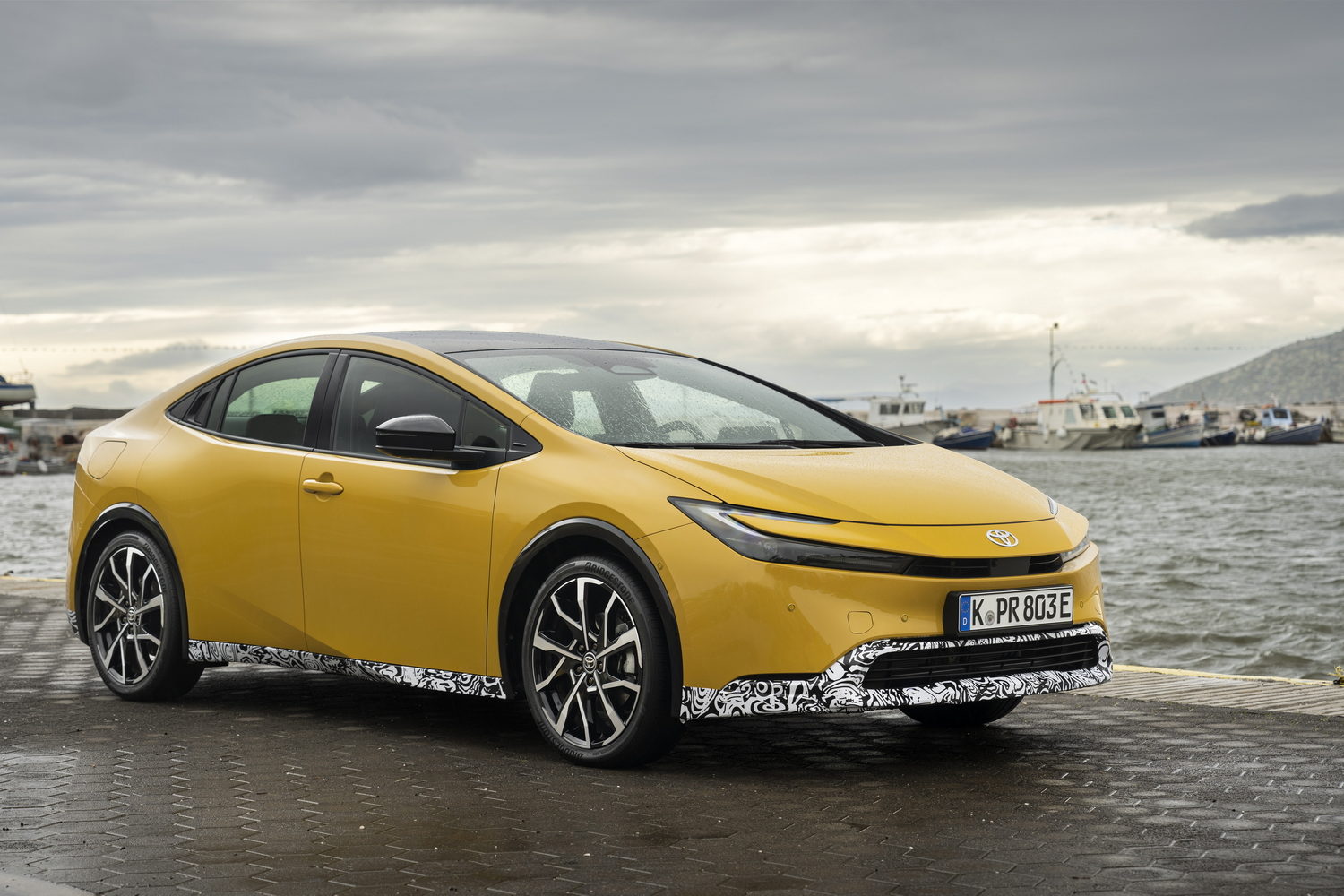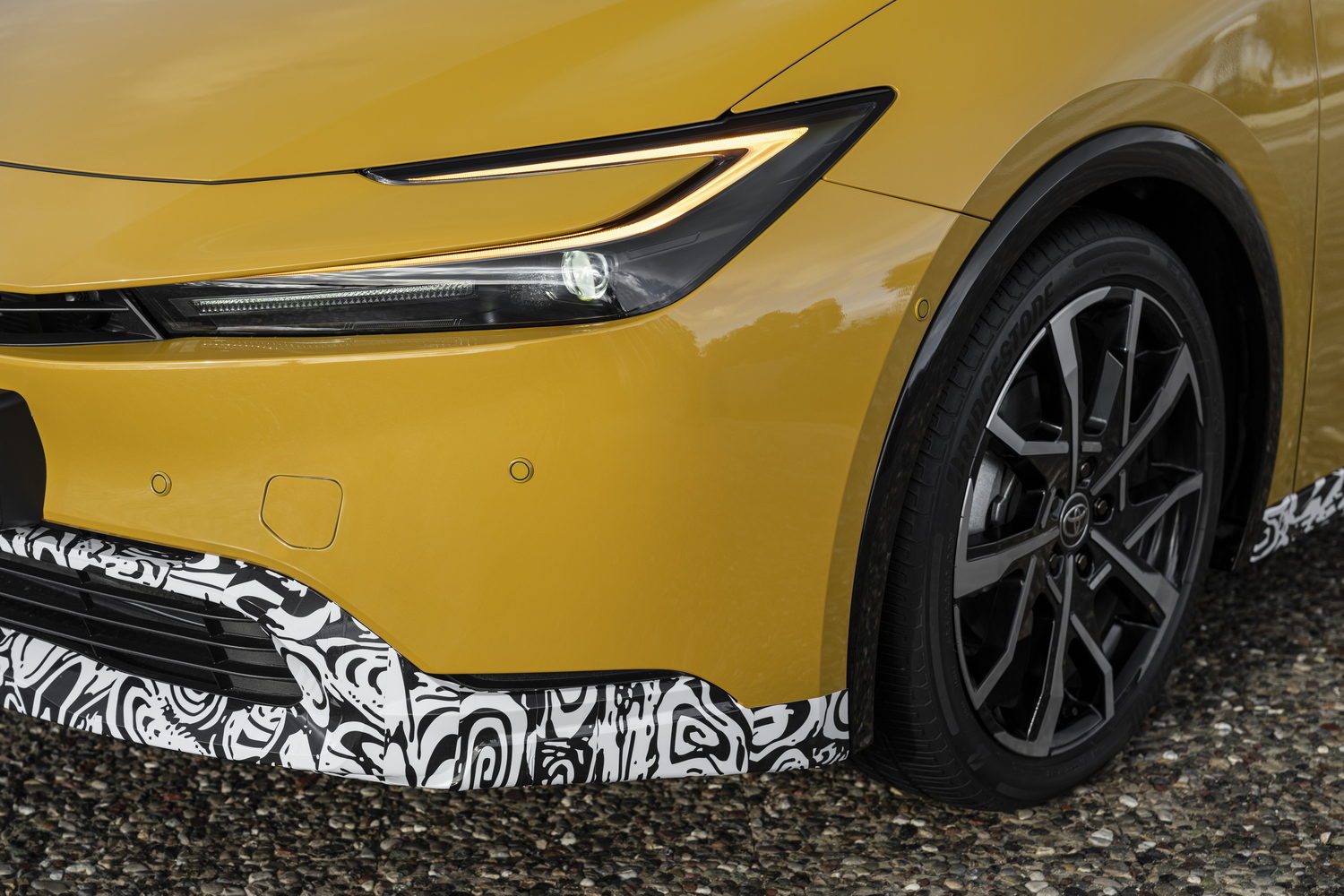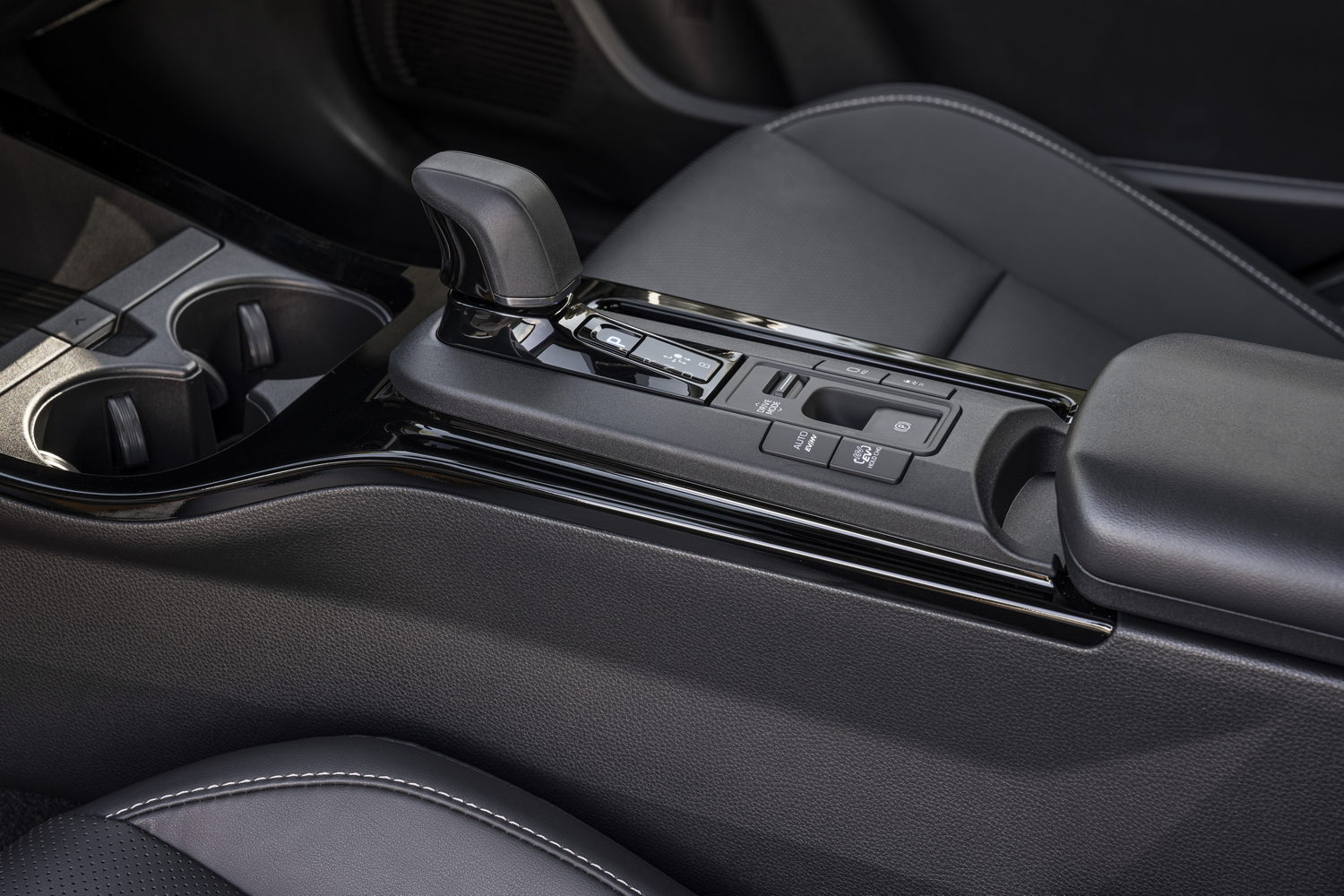Just a few months after the Toyota Prius celebrated its 25th anniversary, the fifth generation of the hybrid hatch hits the Irish market. And the new model really is that - new. The obvious talking point is the Prius's eye-catching styling, but underneath is an update to the platform Toyota uses across much of its line-up, designed to make its cars even better to drive and more refined. The hybrid powertrain is new, too, and the Prius will now be sold exclusively in plug-in hybrid guise in Ireland - and in the rest of Europe for that matter. We got the opportunity to test a pre-production prototype six months before the car arrives in Ireland.
In the metal
Allowing for the fact that only a small percentage of Irish buyers are likely to opt for the striking yellow launch colour shown here, the new Prius is undoubtedly a good-looking car. That's perhaps emphasised by what has gone before, as the model is not known for being beautiful - he said diplomatically... The new one is unequivocally appealing, as evidenced by the response we've had on social media to our initial posts showing the new car.
The detailing is attractive for a start, from the new "hammerhead" front-end design (which we will be seeing a lot more of from Toyota) to the delicately sloped rear truncated by a stylish LED lightbar. It vaguely calls to mind the rear lights found on the the Corolla Liftback of the early nineties, but it's inarguably bang up to date. Topping it off, the Prius name is emblazoned across the back of the car, as if Toyota is particularly proud of what it has achieved.
Helping the car's cause no end is its new proportions. In comparison to the previous Prius, the new model's roof is a massive 50 millimetres lower, while the car is also 20mm wider and there's a significant extra 50mm in the wheelbase. Complementing all that is the fitment of 19-inch alloy wheels. The end result is a Prius that, while as unique as ever, now looks great from any angle and even has a decent stance. That'll be a shock to some.
Toyota's reinvention of the Prius didn't stop there. Inside, while it's still quite different in design and layout to the rest of the Japanese firm's line-up, it's not as strange as some will have found its predecessors. What's more, there's been a tangible improvement in terms of perceived quality and, well, premium-ness. It certainly doesn't feel like something that will be turned into a cheap-as-chips, hose-down taxi any time soon.
Admittedly, to access the cabin, taller people will find they may need to duck to get in, because of the low roof, but the seating position is also lower than before, so there's plenty of headroom front and rear once you are in. From the driver's perspective, there's loads of adjustment in the seat and steering wheel so it's easy to get comfortable and, despite the shape of the car, it's easy to see out in all directions - even over the shoulder.
The steering wheel boss appears overly large, but you soon find your way around it, and all the switchgear has a well-oiled precision to it that enhances the premium feel. The driver looks over the top of the rim to a seven-inch screen for the digital instruments that's clear and easy to read. It's complemented by a 12.3-inch touchscreen mounted up high in the middle of the dashboard running the latest Toyota software. It looks slick and works well, but we are delighted to see that physical controls for the heating and ventilation are retained underneath that.
At the front of the centre console there are USB-C charging ports, and a 12-volt outlet ahead of a hollow that could easily accommodate even a larger smartphone. This shelf can be removed as well to hide valuables underneath or increase the depth available for storage. It looks like the wireless charger will go there, but we're told that it will instead sit alongside the drive lever, holding the phone upright while charging.
There's plenty of space for adults in the outer two rear seats - and ISOFIX mountings in those positions for child seats, too. The middle passenger has to contend with quite a small, raised section in the floor and there are no rear air vents, unfortunately. Our test car featured heated rear seats and another pair of USB-C ports, but it's not yet known if those will be found on Irish cars.
Split-folding rear seats will, of course, in a 60:40 divide. When folded down, the seat backs form a usefully flat surface in conjunction with the boot floor, though the luggage capacity when the rear seats are in use is only 284 litres.
Driving it
Between the front seats is a distinctive and high-set drive lever. To set off, it is pulled back into D for Drive or B to activate the highest regenerative braking setting. The latter may also be adjusted within the instrument screen by using the buttons on the steering wheel. On the centre console there's also a toggle switch to cycle through Eco, Normal (the default), Sport and Custom driving modes, though the latter allows adjustment of the response, steering and air conditioning only - and we didn't find a drastic difference between any of the levels. As ever, most drivers are unlikely to bother changing this.
Also behind the drive lever is a pair of buttons that allows the driver to alter how the hybrid system works, independently of the main modes. You can select to drive in EV (Electric Vehicle) guise at any stage so long as there is enough charge in the battery, while it's also possible to instruct the system to actively charge up the battery on the move - for use later on.
Whichever drive setting you have selected, the Prius steps off smartly from rest, clearly using the instantaneous torque of the front-mounted electric motor to get the car under way. The motor is certainly up to the job of propelling the Prius on its own, as it can muster up to 163hp and 208Nm of torque. Toyota hasn't completed homologation of the Prius as yet so can't give us a definite figure for its range on electric power, but, fitted with 19-inch wheels, it's expected to be around the 65km mark.
Impressively, despite quick-moving traffic and some hilly terrain, we managed 60km on electric power in our test of the prototype, so that bodes well for commuters that have access to charging at home and at work. In total we covered over 100km, and the average fuel consumption worked out as 2.3 litres/100km. The on-board AC charger is rated at 3.5kW allowing a recharge in about four hours.
Although the Prius reverts to operating much like one of Toyota's non-plug-in hybrids when the battery charge is depleted, we'd expect the consumption to rise a little from that the further you drive without charging up the battery from an external source. Nonetheless, it has the potential to better diesel cars of the same size - we'll know more when we test the finished product later this year.
When the engine does kick into life, it's quiet and unobtrusive for the most part, certainly when ambling around on a constant throttle opening or when on the motorway at a cruise. Only when you put your foot down for maximum acceleration does it become a little raucous, but the upshot is a system maximum output of 223hp, which means the Prius is quicker than many will expect. That's reinforced by the 6.8-second 0-100km/h time and no doubt helped by the relatively low 1,600kg kerb weight.
Toyota has managed to keep the weight of the new Prius down to that of its predecessor despite extra equipment, thanks in part to a significant upgrade to the "TNGA GA-C" platform underneath. Another benefit of the new underpinnings is an increase in torsional stiffness. To buyers, that means enhanced refinement and quietness on the road, while it also allowed the chassis engineers to optimise the suspension design and settings to find a balance between comfort and road-holding.
The longer wheelbase and wider tracks will no doubt have contributed to how the Prius drives, too and it's remarkably good fun when the road turns twisty. Smooth, friction-free steering helps, and it's well-weighted and geared so as to feel direct, but never nervous. The brakes could do with a smidgen more feedback, but the pedal feels reassuringly solid and well-modulated, despite the system having to cope with mixing regenerative braking with conventional friction brakes as required. Meanwhile, there's very little lean side to side as you push the Prius through a sequence of tight corners. It feels agile, but also inherently stable.
In fact, it's the stability and civility of the car that stick in your memory. Though it doesn't get a luxury-car-like magic carpet ride, it is comfortable, even over bumps and poor roads. It deals well with such things, and it feels competent in its response to surface changes, too. Double-glazed side glass enhances the overall serenity at a cruise, as well, so this should make for a great long-distance motorway cruiser.
What you get for your money
At the time of writing, we have no indication yet as to how the Prius will be priced. Its ultra-low CO2 emissions rating should mean just seven per cent VRT, which will help its cause, but on the flip side, the car is to be marketed as a premium product. To that end, Toyota Ireland has confirmed it will sell a single high-spec version, which we take to mean that the 19-inch wheels and leather upholstery will be standard.
Ignore the panoramic glass roof of our pictures, and information elsewhere about a solar panel in the roof that can charge the drive battery, as neither of those features will be available in Ireland.
Buyers will be happy they're getting the latest Toyota Safety Sense suite of safety functions - and it can now be updated over the air. Standout features include a Pre-Collision System, Intersection Collision Avoidance Support, Land Trace Assist, Obstacle Anticipation Assist and Front Cross Traffic Alert.
Meanwhile, Deceleration Assist attempts to slow down the car according to the road or traffic ahead when a driver takes their foot off the accelerator, and Steering Assist uses information about the corners ahead to alter the power steering strength to allow for smoother and easier cornering.
Summary
Some will wonder why Toyota didn't give the new Prius a new name. After all, it now looks sensational, it is more premium than ever and it drives brilliantly, justifying a change of tack. However, at its heart is the same energy-saving concept that first graced our roads over 25 years ago in that awkward-looking first-generation model. So instead, Toyota has boldly reinvented the Prius, giving it the ingredients to attract buyers that would never in a million years have considered a Toyota Prius. It has certainly got our attention.









































